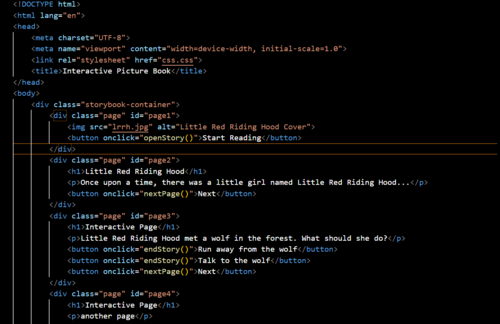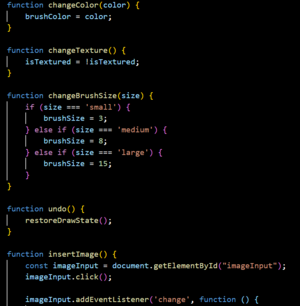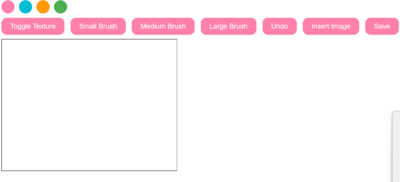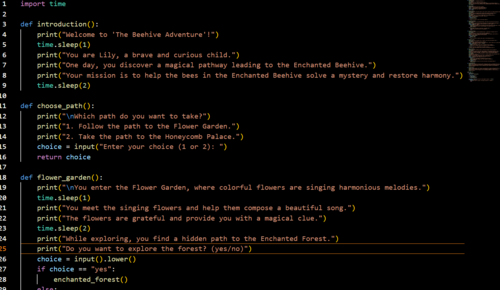GRADUATE MEMOIR
knotes on knots
symbolism
Knots can serve as powerful metaphors in narration, representing various themes and concepts that can add depth and complexity to a story. conflict and resolution Knots can symbolize different aspects of life, such as complexity, unity, connection, or even entanglement. In a story, a knot can represent a complex problem that the characters need to unravel, whether it's a mystery to solve, a challenge to overcome, or a complicated relationship to understand. Interconnectedness Knots often involve multiple elements intertwined and connected in various ways. In narration, this can represent the relationships between characters, families, or communities. A story can explore how these connections are formed, tested, and sometimes broken, mirroring the process of tying and untying knots. Mystery and Intrigue: Knots are often associated with mystery and puzzles. In a narrative context, knots can be used to create suspense and intrigue. A tangled knot of events or secrets can keep readers engaged, urging them to read on to find out how the narrative threads will be unraveled. Cultural Significance Different cultures have their own traditional knots with specific meanings. Incorporating these cultural knot symbols into a story can add richness and authenticity to the narrative. These knots can carry cultural traditions, values, and beliefs, providing depth to the story's setting and characters. Metaphorical Complexity? Knots can be used metaphorically to convey complex ideas or emotions. For example, a character might feel "tied up in knots" to describe their anxiety or confusion. This metaphorical use of knots can enhance the emotional depth of the narrative and allow readers to empathize with the characters' experiences.
Sesh2
proposal
what?
a web based platform that consists of a selection of interactive picture books and supplementary games and exercises focusing on creativity.
why?
the projects aims to encourage the bond between children (3-7 ages) to read more and find productive and creative ways to spend alone time. Another aim is to boost their creativity where they can be a part of a fictional adventure. To make picture books more than readable objects but something further to interact with and discover.
workflow
-finish reading articles and make a reference list for further reading -make surveys for kids between ages 3-7 and analyze their needs and interests. -interview parents to analyze their needs also; do they need a tool to spend time with their kids or do they need a tool for their kids to spend time alone or with peers? what is the urgent need? -set limitations of age, interactivity level, tools and aims. -choose a picture book to make interactive. -make workshops with kids to see their responses to the prototype and adjust accordingly.
timetable
sept-oct-nov: read and research about the topic and be ready to set limitations. revisit the workflow and start to make an outline. choose the book and start making small prototypes. nov-dec-jan: make prototypes of different ideas to test and prepare the surveys. first chapter and detailed outline. make surveys. jan-feb-april: analyze surveys and develop prototype. plan to try the prototype with the target audience. adjust accordingly. finish thesis and project :D relation to previous practice: working as a childrens literature editor and translator in publishing houses made me realize certain gaps and pushed me to research on new ways to engage children with literature.
choices made and mostly to be made: first choice made so far is to go for this. the second is to make this a creativity tool not an education tool. to be made: will this be only a digital project? will it be called an interactive ebook or a new term? will there be adaptation of new picture books or anon tales? will it only be a reading tool or will there be room for writing, making and peer interaction. examples and sources:-piboco-noveleffect-bookr-kotobee-stepinbooks-dribbble
1 What do you want to make? 2 How do you plan to make it? 3 What is your timetable? 4 Why do you want to make it? 5 Who can help you and how? 6 Relation to previous practice 7 Relation to a larger context 8 References/bibliography
Sesh3
Three key issues/tricky issues/tricky shoes
1.Interactivity
Interactive and creative reading/writing experiences and the limits of inclusivity in narratives for children.
-media archaeology perspective as well. -differences in experience when reading aloud, alone or with someone.
-The joy of destruction -storytelling with words, knots, images, drawing, sound, gestures.
-crossing the border of writer and reader.
- the limits of deconstructing a text and deauthorizing the author
- the simultaneous act of writing and reading
2. Knots
implementation of knots and knot theory in creative writing, reading and making according to the interactivity levels in certain ages.
-pedagogical approach
-limitations -differences from already existing ebook platforms?
-why?
3. Digital Platforms
childrens interaction with digital platforms and ways of making screentime effective and social.
-smudging the boundary between childrens ebook and storytelling games.
-what do we learn from narrative, open ended and multiple ending games.
-Why do we have less modes of reading and writing for children when compared to adults?
format
I want to write about the Interactive Makers Project interactively (somewhat like a text based game) and make the thesis with multiple endings according to the readers choice at certain bending points.
Since the Project is including knots and I have developed a personal interest in using knots as a form of structuralising ideas and information, there will be a relation to knots in the thesis itself. knots will represent the experiences that raise intersting opportunities for research and distinct events I went through as making the project, strings will represent theories and approaches that I have on these events and bends will be representing the relation between these and my own experiences/motivations.
The three chapters will be formed according to different knots, depending on the subject and the writing will be based on the structure of this knot.
Apart from this, for my own research preferences, I am planning on documenting this years process of writing and researching using the Incan Quipu method which was historically used to archive information, using multiple strings of different colors, knots to represent analytic memory and historical events.
prototyping
javascript and interactivity trials
I made a prototype for a drawing pad. It seems to be working. Choosing colors, medium/small and large brush choices. Importing an image and sacein are also options. This took a long time because i followed a tutorial and customized everything basically. Now i would need to find a way to implement this in the web platform of the interactive story itself.
My main goal is to maybe use the drawing pad as a `create your own adventure` option. The user can draw a scene or paint on an existing image and progress the story like this by adding frames to it. Another option could also be writing a musical score or a jingle for the story or even small sound effects.
text based game
I tried composing a multiple ending small story using twine. It was a good prototype and warm up to get used to building an interactive story.
workshop ideas
knots real life
Create a Knot-Story Bracelet: Provide children with colorful strings or yarn and teach them a simple knot-tying technique (e.g., square knots). Assign each knot a specific meaning or element of a story (e.g., a square knot represents a character, a half-hitch represents an event). Encourage kids to create a story by tying knots in a specific sequence, with each knot representing a different part of the story. As they create their bracelet, they can narrate their story aloud, describing the plot and characters associated with each knot. Treasure Map Adventure: Introduce the concept of a treasure hunt adventure. Provide children with a "blank" treasure map (paper with a simple map outline). Instruct them to write a creative story where each location on the map corresponds to a part of their adventure. Kids can tie knots or use different symbols to mark important locations on the map, and then write descriptions of what's happening at each spot. Story String Scavenger Hunt: Prepare a long piece of string or yarn with knots tied at regular intervals. Hide clues or riddles in various locations around the house or yard. Children follow the string, untying knots and solving clues as they go. At each knot or clue point, they can jot down a sentence or two to add to their unfolding story. Knot-tying Character Portraits: Provide kids with a selection of colorful cords and knots. Instruct them to choose a character from a book or create their own character. Encourage them to use knots to represent different characteristics or traits of the character (e.g., a square knot for bravery, slipknot for curiosity). As they tie knots, have them write short descriptions of the character's attributes next to each knot. Adventure Diary with Knot-coded Entries: Give children a blank diary or journal. Teach them a simple knot code where each knot corresponds to a letter of the alphabet. Encourage them to keep an adventure diary where they write about their daily experiences, but with entries encoded using knots. They can include drawings or sketches alongside their knotted entries. Knot Storytelling Relay: Divide children into teams or pairs. Provide each team with a long piece of rope with knots spaced along its length. Each child adds a sentence to an ongoing story, with each sentence corresponding to one of the knots. They must tie the rope into a simple knot after their sentence. The next child in line continues the story at the next knot. These interactive creative writing activities not only engage kids in storytelling but also enhance their fine motor skills through knot-tying. They offer a creative and hands-on approach to writing, making the process enjoyable and memorable for young writers.
knots digital
Writing activities with knots (digital): Create a Knot-Story Bracelet: Design a virtual bracelet-making tool where kids can choose different colors of digital strings and tie knots using a simple drag-and-drop interface. Create a storyline template with knots representing story elements, and allow kids to customize it by selecting different knots for characters, events, and settings. Add a narration feature where kids can record or type their story while interacting with the virtual bracelet. Treasure Map Adventure: Develop an interactive map on the web platform where kids can click on different locations to write and store their creative story elements. Include an option to draw or add symbols to mark important locations on the virtual map. Enable kids to connect the knots or symbols on the map to create a visual representation of their adventure story. Story String Scavenger Hunt: Build a digital scavenger hunt game where kids follow a virtual string that leads to clues and riddles placed throughout the digital environment. Allow kids to click on knots or clues to reveal additional story information and prompts. Integrate a writing tool so that kids can write responses and continue their story as they progress through the scavenger hunt. Knot-tying Character Portraits: Create a character customization tool where kids can design and name their characters, assigning knots to represent different character traits. Incorporate a digital knot-tying interface where kids can tie virtual knots and attach them to their character profiles. Provide a space for kids to write character descriptions and stories featuring their characters. Adventure Diary with Knot-coded Entries: Develop a digital diary platform with a built-in knot-coding system. Enable kids to type or select letters to encode text into knots and add entries to their digital diary. Allow for multimedia integration, so kids can include images, audio, and video in their diary entries.




